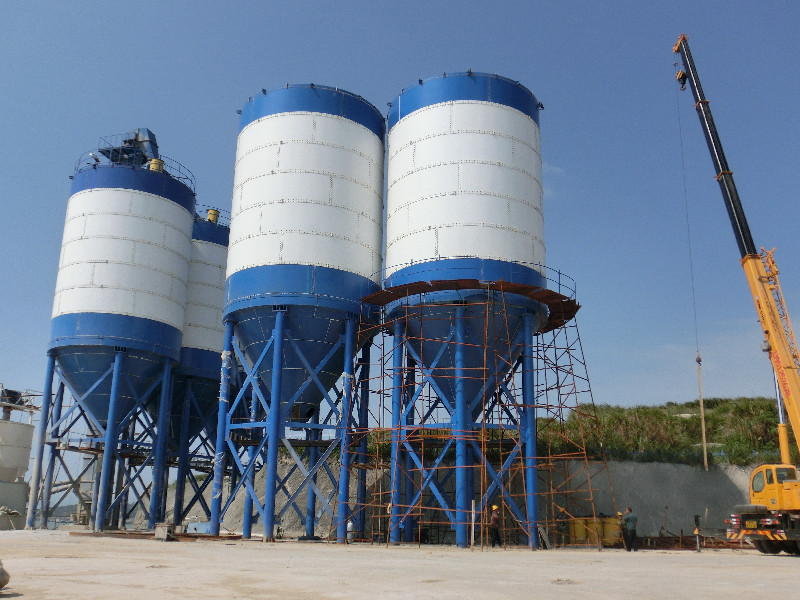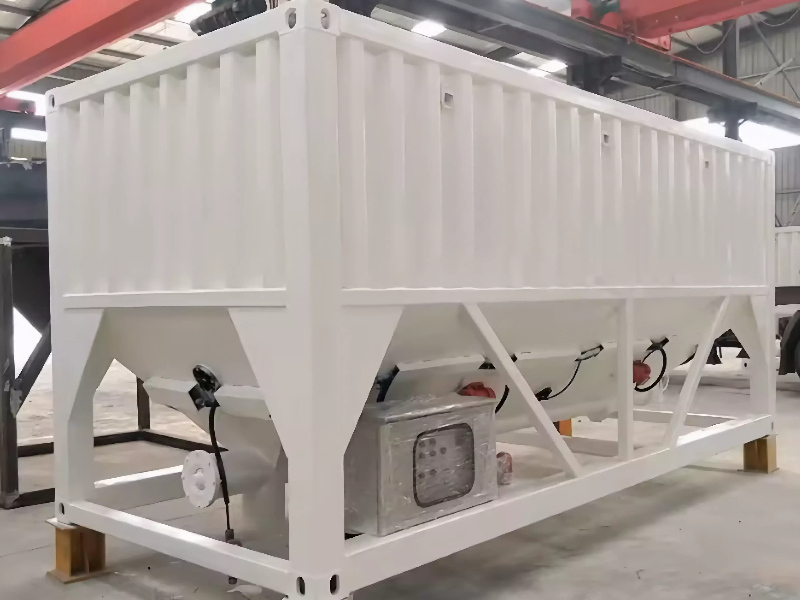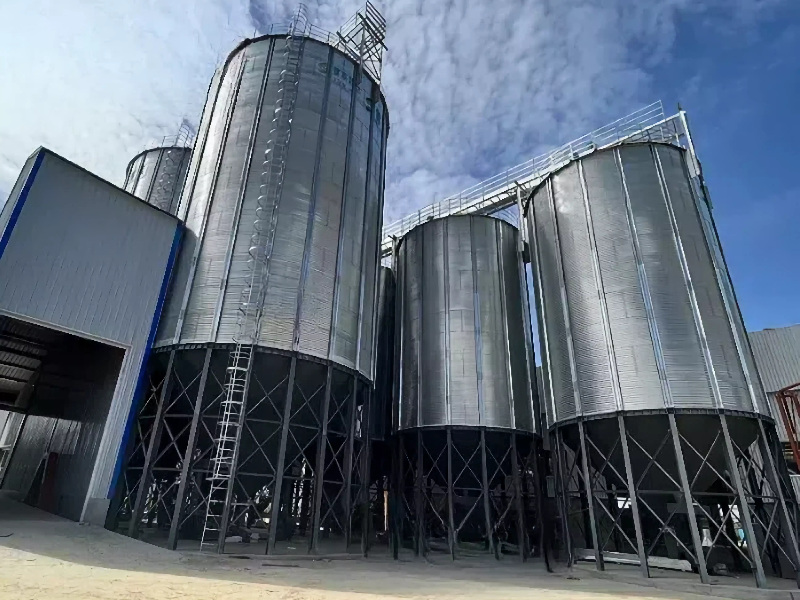Steel silos, also known as cylindrical steel storage tanks, have a wide range of applications in both industrial and agricultural fields. They are primarily used for storing loose granular or small block raw materials or fuels, such as ores, coal, sand, cement, grains, lime, etc. Based on different classification criteria, steel silos can be categorized in various ways:
Classification by Structural Form
Scaffolding steel silos: Composed of steel pipes and steel plates, these silos are flexible and convenient to install, with a short construction period, suitable for storing small particle materials.
Vertical steel silos: Made of steel plates welded into a cylindrical structure, they are widely used for storing various granular and bulk materials, such as grains, sand, cement, etc. This structure has good compressive and seismic resistance, capable of bearing significant self-weight and external loads, suitable for storing larger materials.
Classification by Cross-Sectional Form
Circular silos: Circular silos have the advantages of rational shape, clear structural force, simple calculation and construction, more convenient for slip-forming construction, less dead material inside the silo, and higher effective storage rate. They are the most widely used form of silo in practical engineering.
Square and rectangular silos: Compared with circular silos, square and rectangular silos also have applications in certain specific occasions, but they may have complex structural forces and increased construction difficulty.
Classification by Functional Use
Agricultural silos: Mainly used for storing agricultural products such as grains and feed.
Industrial silos: Used for storing industrial raw materials or products such as ores, coal, cement, etc.
Classification by Load-Bearing Method
Column-supported silos: The weight of the silo is mainly borne by the bottom columns.
Wall-supported silos: The weight of the silo is mainly borne by the silo walls, and this structural form requires higher strength and stability for the silo walls.
Classification by Height-to-Diameter Ratio
Deep silos: When the ratio of the calculated height of the stored material to the internal diameter of the circular silo is greater than or equal to 1.5, it is called a deep silo. Deep silos need to consider the nonlinear lateral pressure distribution produced by the stored material on the silo walls during design.
Shallow silos: When the ratio of the calculated height of the stored material to the internal diameter of the circular silo is less than 1.5, it is called a shallow silo. Shallow silos have a lateral pressure distribution on the silo walls that is closer to linear during design.
 |
 |
 |